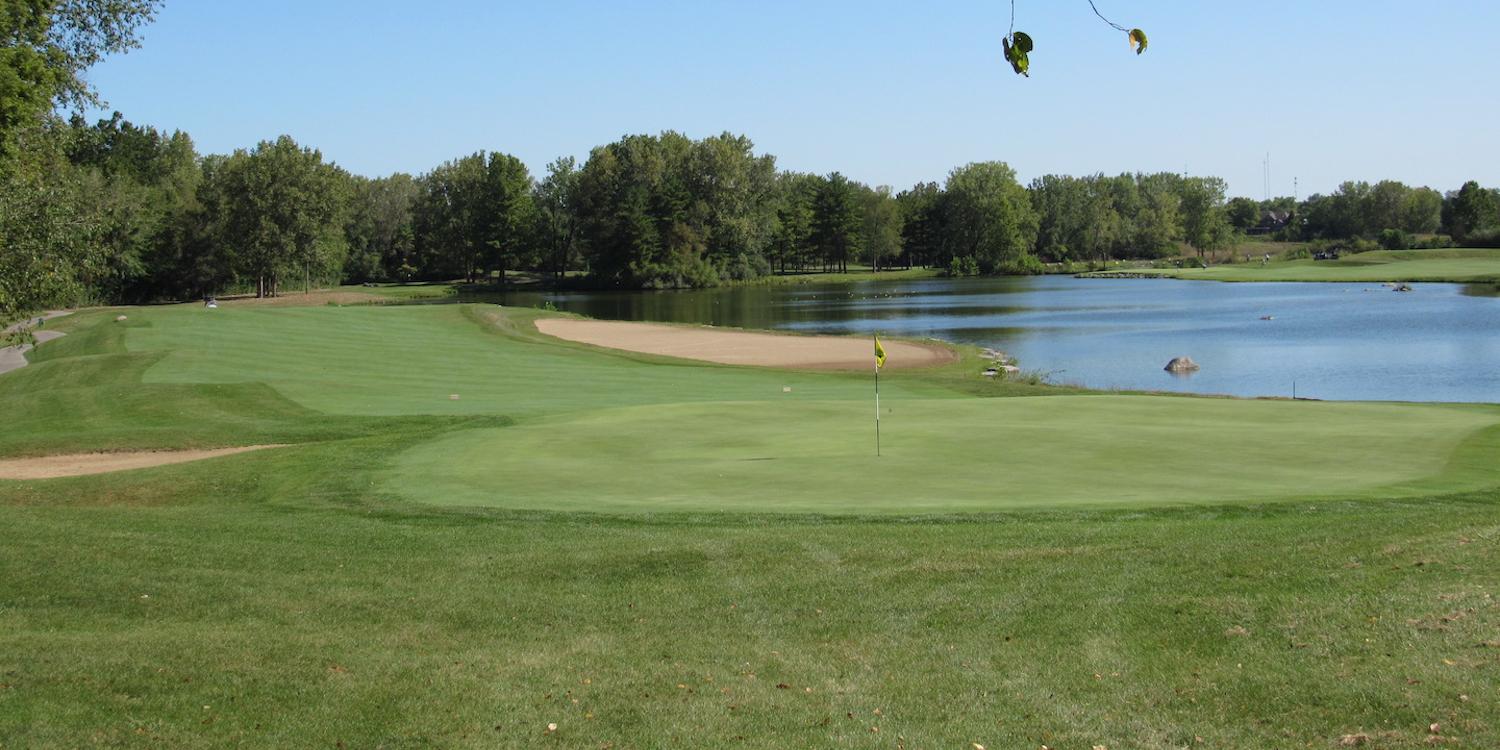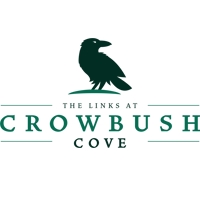
Rock Hollow Golf Club in Peru, Indiana, ROCKS!
By Kiel Christianson
Rock Hollow Golf Club is owned and operated by the Smith family, as in former PGA Tour Pro Chris Smith. The 7,005-yard Tim Liddy design is proof that a course doesn't need a fancy clubhouse or hoity-toity staff to be one of the best in a golf-crazy state. Perennially ranked among Indiana's top-10 public courses, Rock Hollow is the family business of a tight-knit family with deep roots in this tight-knit community, located about 80 miles north of Indianapolis. The tragic death of Chris Smith's wife and severe injuries sustained by his two children in an auto accident early in 2009 shook not only everyone at the course, but also the entire surrounding area.
The Smith family endured, and has thrived, as has Rock Hollow.
Golfers here are treated to an outstanding layout that winds through a mined-out rock quarry, challenging even the best players with tall stands of timber and rocky outcroppings. I played with a +1 handicap who looked at the scorecard and saw that the Black tees (tips), though not overly long, have a rating/slope of 74.2/138. He said, "I don't think I feel like tackling that this morning." He chose to join me on the 6,463-yard Rock tees (white; 71.2/132). In fact, even the next set of tees further up (Blue) have a slope rating higher than my local course, despite measuring under 6,000 yards.
Course architect Tim Liddy was a star student of Pete Dye, and he learned from the master how to toy with players' eyes and judgment. At the same time, he is fond of short par 4s, and "The Rock," as the locals call it, has several. Each one of these dares the foolhardy to swing for the fences. But even the best wiser players soon realize that club selection is critical. The mounded green complexes and tight tee shots will take their toll if you don't exercise caution in picking your spots.
Playing Rock Hollow Golf Club
Green fees at Rock Hollow max out at $69 (with cart), which represents an increase of less than $20 since I last visited in 2009. It was a bargain then, and just as much a bargain now. First-time visitors might feel underwhelmed by the understated entrance, parking area, and pole-barn clubhouse, but the relative lack of frills is how they've been able to keep green fees affordable. Out on the course is where you see the top-tier details: bentgrass tees, fairways, and greens, all well-manicured and attentively landscaped. Rather artistically arranged and mounded rocks punctuate the layout, recalling the land's history as a rock quarry.
Your swing, judgment, and patience are all tested immediately out of the gate, as the downhill, par-4 1st Hole measures just 296 yards from the back tees. But the heavily mounded and bunkered green is tucked to the left, partially behind dense, rocky woods, and there's no bail-out to the right, either. Don't have a tight, 290-yard draw locked in on the first tee? Maybe pull an iron.
Tee shots don't ease up as you progress, either. There are no parallel fairways here; most holes feel pretty isolated, and all are lined with tall hardwoods, wetlands, or both. The long, uphill, par-5 6th Hole is a prime example. This said, most fairways do open up a bit more than they appear from the tees, but only in spots. For the most part, accuracy off the tee is more valuable here than length.
The collection of par 3s is nicely varied with respect to shaping and hazards, from the short tabletop 4th Hole to the longer 8th and 14th Holes with their prominent water hazards. The one-shotters are also where yardage differences between the tees are most pronounced. There are only four sets of tees, but on the 8th, for example, the yardage ranges from 219 yards at the tips all the way to 96 yards at the most forward set. If you're playing a scramble here and have some skilled women, juniors, or seniors on your team, you've got a huge advantage.
As mentioned, Liddy, like Dye, is skilled at visual trickery. He uses mounding and angles to convince you that targets or hazards are both farther and nearer than they appear. Toss in a generous portion of blind shots, and Rock Hollow is a course that rewards experience and local knowledge. Take the seemingly benign par-4 9th Hole, which maxes out at 383-yards. From the 352-yard Rock (white) tees, a prominent, deep fairway bunker at the elbow of the left-to-right dogleg looked unreachable for me. Yet my heeled, slicing drive came up just 25 yards short of its start. So the much longer, younger, and better player ripped a drive that we all thought had easily cleared its far end. When we arrived at our balls, though, his was squarely in the middle of the sand, which extended further than it looked. Our second shots were equally as confusing: I thought mine was short - it was long - and another player thought his was next to mine, but his was 20 yards short of the green.
The trickery, the angles, and the accuracy all come to a head on the 427-yard 18th Hole. It is a classic cape hole, meaning that the tee shot requires a forced carry over a lake to a crescent-shaped fairway set perpendicular to the tee boxes. Holes like this is where laser range finders pay for themselves. Players scan the far edge of the water and decide how much they think they can bite off. 220 yards? 240? 275? You can almost hear Dirty Harry growling, "You feel lucky, punk? Well, do you?" Once you pick a number, all you have to do is hit your line. Slice it, you'll probably clear but have a monster of an approach into the green. Hook it, and you'll likely come up short.
I hooked my drive, but just slightly, staying airborne long enough to land in the waste bunker that borders part of the fairway. The sand here-as in all the bunkers at Rock Hollow-is slightly coarse and gravelly. So my ball sat up nicely, allowing me to pick it clean with my 9-iron to cover the 139 remaining yards. When the ball came to rest 18 inches from the cup, and I tapped in for a closing birdie, I could honestly say that this was my best closing hole all year.
Rock Hollow: The verdict
Indiana golf is vastly underrated. And most underrated of all are the numerous top-ranked public courses scattering the countryside, beyond the hustle and bustle of the greater Indianapolis area. Rock Hollow is one of the very best of these. It's a family-run operation at family-friendly rates that nevertheless plays to Tour-level standards. Perhaps its only weakness is a lack of more blended tee options between the four widely-spaced tee sets (there is just one blended set between the regular and "senior" tees). Rock Hollow Golf Club has survived and thrived on challenging shot-making and superb conditioning. If you value these aspects of the game over frills and fawning attendants, this course is for you.
Revised: 08/11/2025 - Article Viewed 135 Times
- View Course Profile
About: Kiel Christianson
![]() I’ve been a travel and golf writer for online and print publications for 25 years, including over 10 years with The Golf Channel. My blog on The Golf Channel websites began in 2003, making it one of the first in the golf world. Other publications include poetry, food and travel features, and research articles in the broad area of cognitive science.
I’ve been a travel and golf writer for online and print publications for 25 years, including over 10 years with The Golf Channel. My blog on The Golf Channel websites began in 2003, making it one of the first in the golf world. Other publications include poetry, food and travel features, and research articles in the broad area of cognitive science.
Contact Kiel Christianson:
Midwestern Golf - Publisher
217-714-4561






